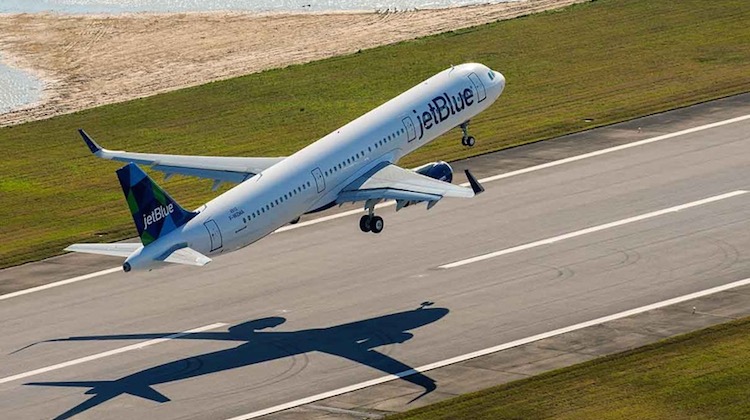
United States-based JetBlue has urged the US Department of Transportation (DOT) to include conditions that protect and promote competition when it approves a proposed alliance between Qantas and American Airlines.
On June 3, the DOT said it had granted “tentative approval” for American Airlines and Qantas to form a joint-venture alliance on trans-Pacific routes with anti-trust immunity (ATI).
The DOT said approval for the metal-neutral, revenue-sharing partnership would be subject to conditions, such as an obligation to provide interline access for any new airline flying from Australia and New Zealand to the United States, as well as requirements to submit origin and destination data and an annual report.
The ruling, which was still subject to a public comment period, also called for the two carriers to submit a “detailed self-assessment after seven years”.
The DOT said in its analysis that even though the proposed alliance was “likely to be pro-competitive and beneficial to consumers”, those positive competitive effects were less certain than in previous cases.
While JetBlue said in its submission dated June 17 it had “no position on whether the Department should grant ATI to American-Qantas”, the airline said it was “undeniable” that approving the tie-up would “substantially reduce competition in relevant markets and concentrate a huge level of market share and power in the hands of immunized alliances”.
Further, it described the granting of ATI to American and Qantas, in addition to the previously approved Delta Air Lines/Virgin Australia and Air New Zealand/United in the Oceania-United States market, as an “awesome governmentally conferred benefit”.
“Therefore, it is essential that the Department’s generosity toward the most powerful carriers and alliances be matched by a similar commitment to protecting and promoting competition from smaller carriers that are not a party to one of these immunized alliances,” JetBlue said.
“While the Department’s Order to Show Cause proposes minimal competition-protective conditions, they are unlikely to undermine the market power of the ‘big three’ immunized alliances in any meaningful way absent more robust, consistently applied conditions to ensure these grants of ATI continue to be in the public interest.”
To that end, JetBlue called for any granting of ATI be time-limited to five years and subject to a de novo (or new) review at the end of that period.
Any immunised joint-venture should also prohibit exclusivity provisions and impose an obligation to provide interline access, JetBlue said.
It was also most important to “assure airport access in the form of suitable gates and a sufficient number of slots at commercially viable times of the day for new entrants and other carriers seeking to compete with immunized joint ventures”.
“JetBlue believes that such conditions are minimally necessary to address the concerns that the Department identified in its Order to Show Cause,” JetBlue said, referring to the June 3 ruling which noted the high market share of American Airlines and Qantas, the low probability of new entrants and the the lack of competing hubs in the relevant markets.
While JetBlue did not fly between the United States and any point in Oceania, it does operate in international markets where it competes with other immunised joint-venture partnerships, such as Mexico where Aeromexico-Delta Air Lines have ATI.
Also, the airline has announced plans to operate to London from New York JFK and Boston from a yet-to-be-announced date in 2021. The UK-US market features two major JVs – American Airlines/British Airways and Delta Air Lines/Virgin Atlantic.

American and Qantas keen to get going
American Airlines and Qantas said in a June 17 submission to the DOT they were eager to implement the proposed joint business agreement (JBA).
“Accordingly, the parties look forward to a final order approving the proposed JBA and granting ATI so that the parties can begin delivering these promised benefits to the traveling public,” the submission said.
Qantas has already pledged to launch a new nonstop route – Brisbane-Chicago – from a yet-to-be-published date in April 2020 with Boeing 787-9 equipment, pending final approval. The Australian carrier also planned to commence flights from Brisbane to San Francisco. Ticket sales for the two proposed routes have not commenced.
American Airlines was also expected to add to its existing Los Angeles-Sydney and Los Angeles-Auckland nonstop services once the DOT issued final approvals.
The pair has estimated the tie-up would yield US$310 million annually in incremental consumer benefits should it be approved. This comprised US$221 million from codeshare availability improvements and US$89 million from an eight per cent reduction in price per interline ticket.
There would also be a forecast 180,000 new market passengers, stimulated by additional codesharing and new flights.











